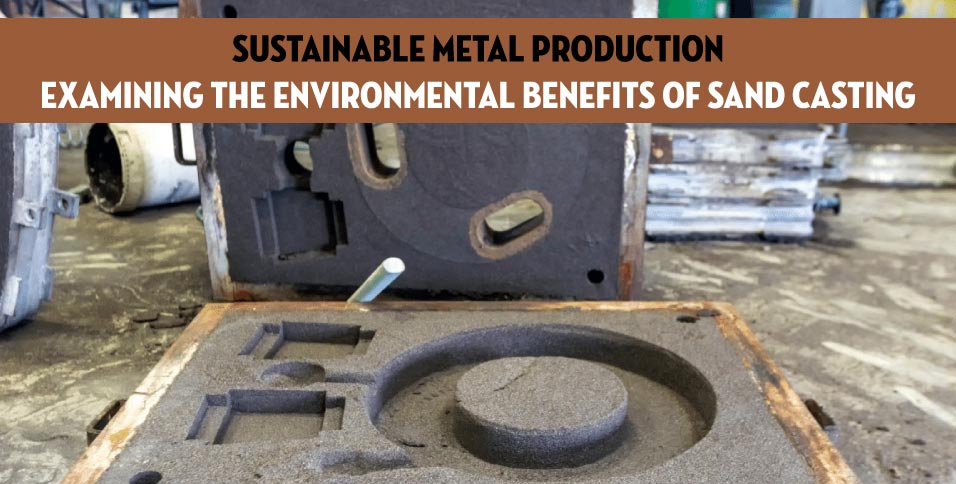Discover the green side of metal production with sustainable sand casting. See more technique that preserves our planet’s resources while delivering top-quality metals.
Table of Contents
- Introduction
- What Is Sand Casting?
- A Greener Alternative
- Environmental Impact Reduction
- Material Efficiency
- Energy Savings
- Sand Casting in Action
- Versatility and Flexibility
- The Future of Sustainable Metal Production
- Conclusion
- FAQs
1. Introduction
Metal production is a vital industry that touches almost every aspect of our lives. From the aluminum in our smartphones to the steel in our cars, metal is an integral part of our modern world. However, this industry often comes at a cost to the environment. Dawangcasting explores an eco-friendly alternative known as “sand casting.” Its remarkable contributions to sustainable metal production.
2. What Is Sand Casting?
Let’s start with the basics. Sand casting is a centuries-old method used to create metal objects. It involves pouring molten metal into a mold made of sand, which shapes the metal as it cools and solidifies. The result? A wide array of intricate metal components, from engine parts to ornate sculptures.
3. A Greener Alternative
In a world concerned about climate change and environmental sustainability. Sand casting shines as a beacon of hope. Some other metal production methods that emit harmful greenhouse gases. Need extensive mining operations, sand casting relies on the sand. It is a renewable and plentiful resource.
4. Environmental Impact Reduction
Sand casting is a poster child for reduced environmental impact. Traditional metal production methods often involve the emission of toxic fumes. Sand casting, generates fewer harmful emissions, making it a cleaner and more choice.
5. Material Efficiency
One of the many merits of sand casting is its remarkable material efficiency. Traditional methods often involve extensive material waste during the shaping and casting processes. In contrast, sand casting reduces waste by creating molds that can reused many times.
6. Energy Savings
Energy efficiency is another area where sand casting excels. When compared to energy-intensive methods like die casting, sand casting requires less energy. It’s a win-win situation: not only does it reduce the carbon footprint, but it also saves on energy costs.
7. Sand Casting in Action
But how does sand casting work in practice? First, a pattern of the desired object. Next, the sand mold can created around the pattern, leaving a cavity where the molten metal will go. Once the metal cools and solidifies, the mold brakes, revealing the finished product. This versatile process can used to create everything from engine blocks to jewelry.
8. Versatility and Flexibility
One of the standout features of sand casting is its versatility. It can used with a wide range of metals, including aluminum, bronze, iron, and even steel. This flexibility makes it an excellent choice for industries. As diverse as automotive manufacturing aerospace, and art foundries.
9. The Future of Sustainable Metal Production
As the world shifts towards more sustainable practices. It’s poised to play a pivotal role in the future of metal production. Its ability to produce high-quality metals with minimal environmental impact. It’s a star in the quest for greener, more eco-conscious industries.
10. Conclusion
In a world where sustainability is paramount, It’s a solution that deserves recognition. With its reduced environmental impact, material efficiency, and energy savings. It is a shining example of how we can maintain the quality of our products while preserving our planet. As we journey into the future, sand casting will continue to mold the way of metal production.
11. FAQs
- How does sand casting work?
Sand casting involves creating a mold out of the sand and pouring molten metal into it. As the metal cools, it solidifies into the desired shape, which is then released by breaking the mold. It’s a simple and versatile method used in various industries.
- What metals can produce using sand casting?
Sand casting can used to produce a wide range of metals, including aluminum, bronze, iron, and steel. Its versatility makes it suitable for many applications, from art to aerospace.
- Is sand casting suitable for mass production?
Sand casting is excellent for both small-scale and mass production. While it may not be as fast as some other methods, it offers advantages to material efficiency. Reduced environmental impact, making it a viable choice for larger production runs.
- Can sand casting reduce greenhouse gas emissions?
Yes, sand casting can help reduce greenhouse gas emissions. When compared to other metal production methods. Its lower energy requirements and minimal emissions make it a more option.
- Is sand casting cost-effective compared to traditional methods?
Sand casting can be cost-effective, especially when considering the long-term savings. It reduces material waste and energy consumption. While the initial setup may be comparable to other methods and the sustainability.
Also Read: Choosing The Right Metal Building Kit For Your Project: An Essential Guide
















